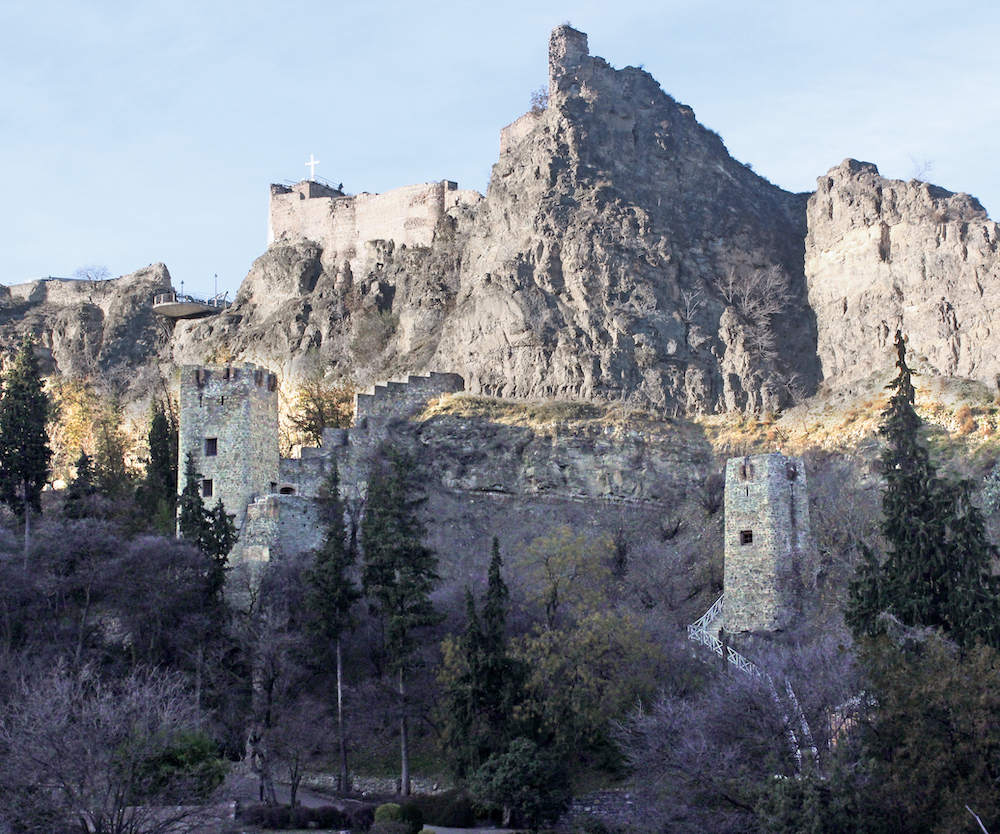
Feel free to add tags, names, dates or anything you are looking for
The National Botanical Garden of Georgia is located in the gorge of the Tsavkisis-Tskali River (a tributary of the Kura River), near the old district of Tbilisi. To the north, the Garden is bordered by a mountain ridge surmounted by the Medieval fortress, Narikala. The Garden has a long history. In the Middle Ages, the area was occupied with orchards belonging to the Georgian kings. After the annexation of Georgia by the Russian Empire in 1801, the Garden became state property. During the nineteenth century, it was maintained and managed by various state organizations, and underwent several periods of decline and revival. It was officially established as the Tbilisi Botanical Garden in 1845.

Botanical Garden in the 1900s
By the end of the nineteenth century, the Botanical Garden was expanded to the west and south-west, and its collections had grown significantly. Many new plants were introduced and an irrigation system was installed. In the 1960s, during the Soviet period, the Garden acquired new territory – reaching up to 1 280 000 square meters. Particular attention was paid to the creation of new collections through plant propagation.
Following the Independence of Georgia, a new period began in the Garden’s history. After the economic difficulties of the 1990s, the situation improved in the 2000s and 2010s, when extensive renovation projects were carried out.

Late Medieval towers
Along with its unique collection of plants, the National Botanical Garden of Georgia has a rich cultural heritage, which includes a number of historic buildings. The two towers located near the entrance date from the late Medieval period. They play a crucial role in the iconic view of the old section of the Garden.
Waterfall Bridge
The Waterfall Bridge was constructed in 1914 across the same river, and is set high above the waterfall. It is built of reinforced concrete and consists of a walkway resting on twin segmental arches. Owing to its spectacular location above the waterfall, the bridge has become a symbolic landmark of the Botanical Garden.
Museum of the Botanical Garden
In the late nineteenth and early twentieth centuries, several structures were built that served the various needs of the Garden. Oldest among them is the Museum, which housed the first major exhibition of natural history in Georgia. Constructed in 1872 as a small one-storied structure, it was later enlarged with the addition of an extra floor above, and annexes from the west and the east.
Guesthouse of the Botanical Garden
The Laboratory and Ticket Office at the entrance of the Garden, as well as the Guesthouse and Office of the Floriculture Department were all built between 1900 and 1905. They have unplastered brick façades that feature decorative elements made of brickwork. In the late Middle Ages, a Muslim cemetery was established next to the Garden. It served the needs of the Persian and Azerbaijani communities of Tbilisi. It ceased functioning after the Soviet occupation of Georgia, and was demolished in the 1960s. In its place a small pantheon was constructed in the Garden, where eminent Azerbaijanis who had lived and died in Tbilisi were interred.